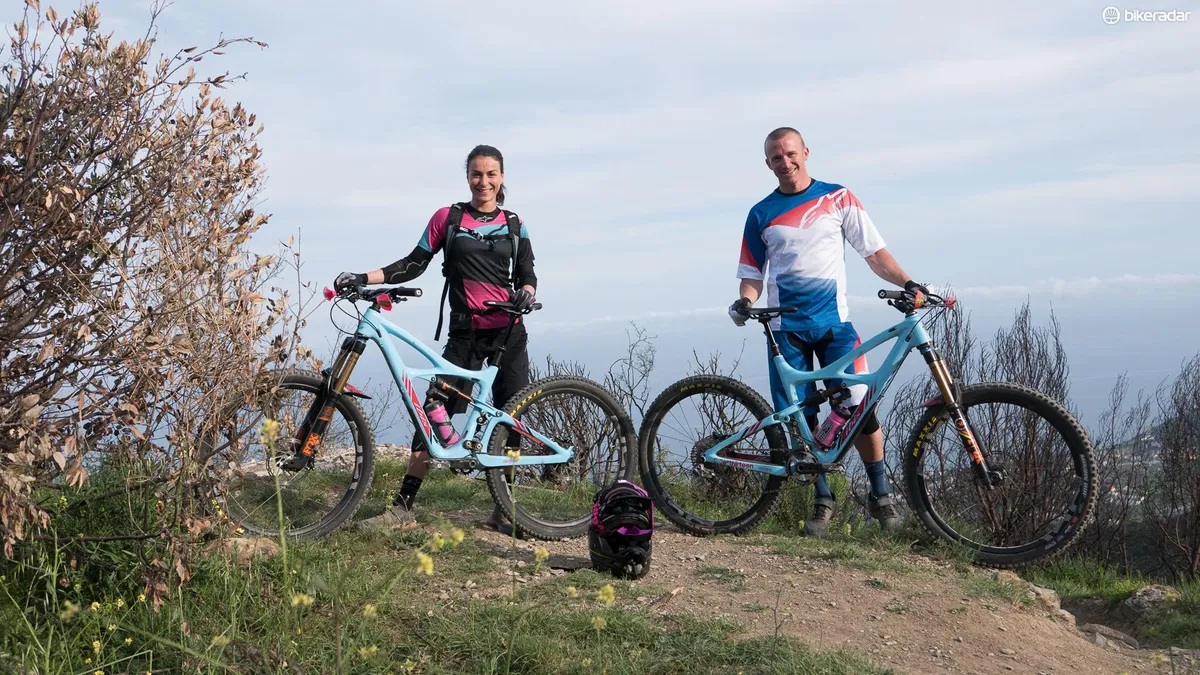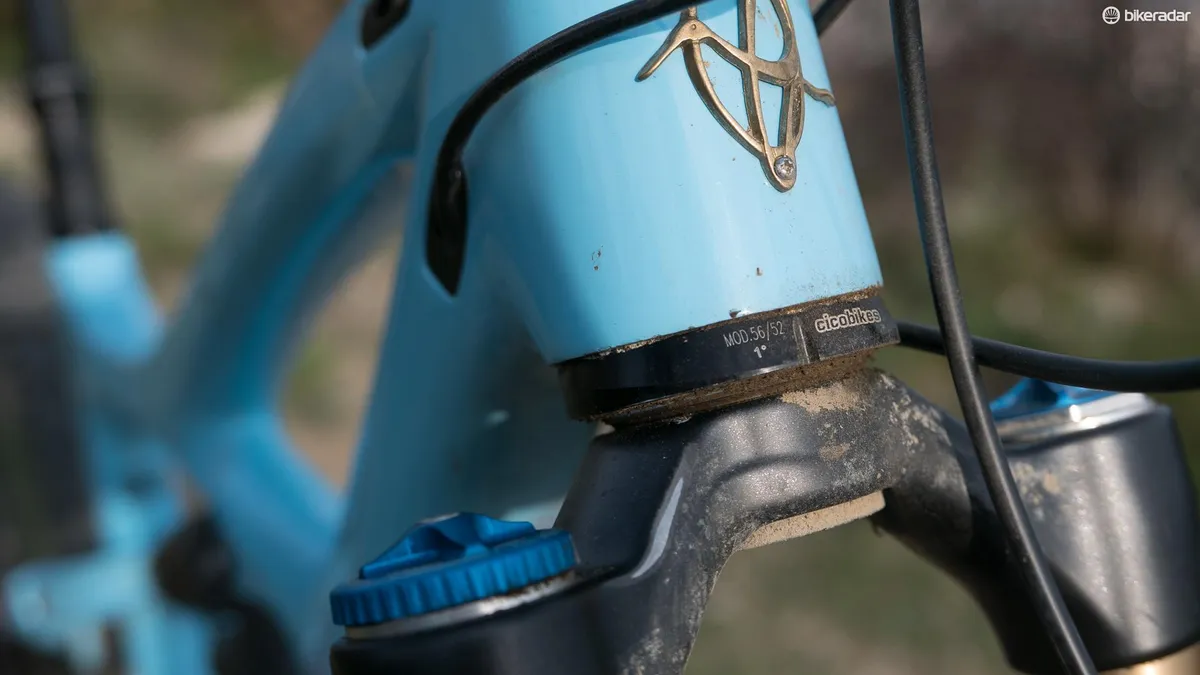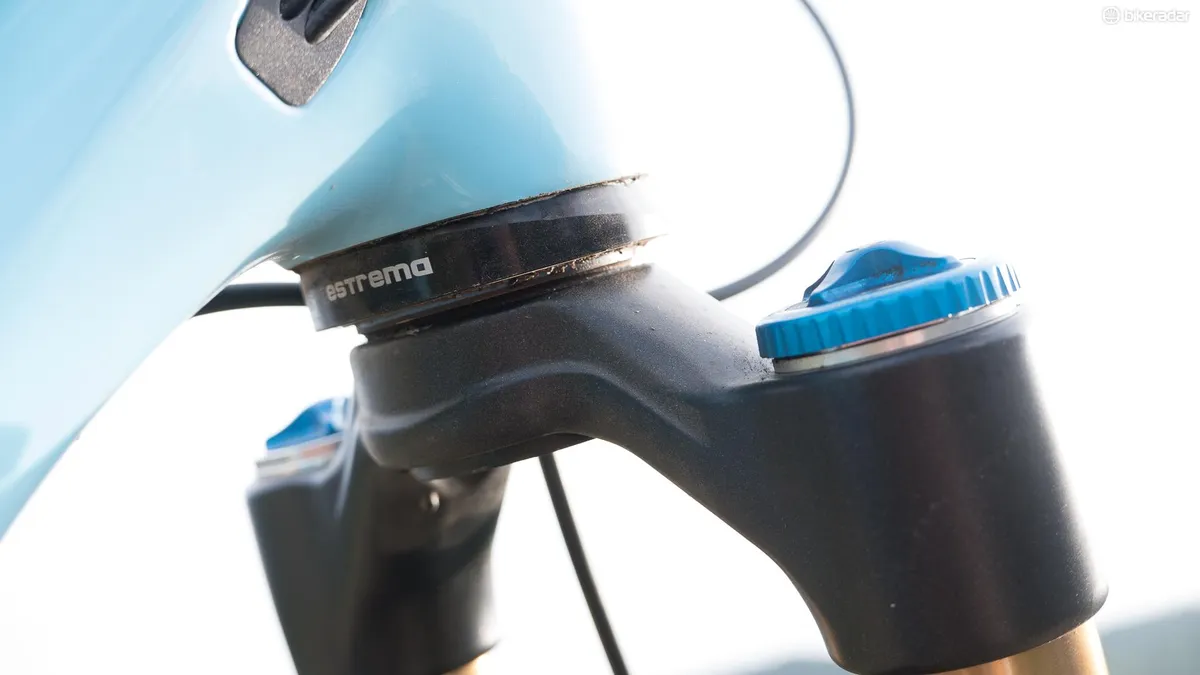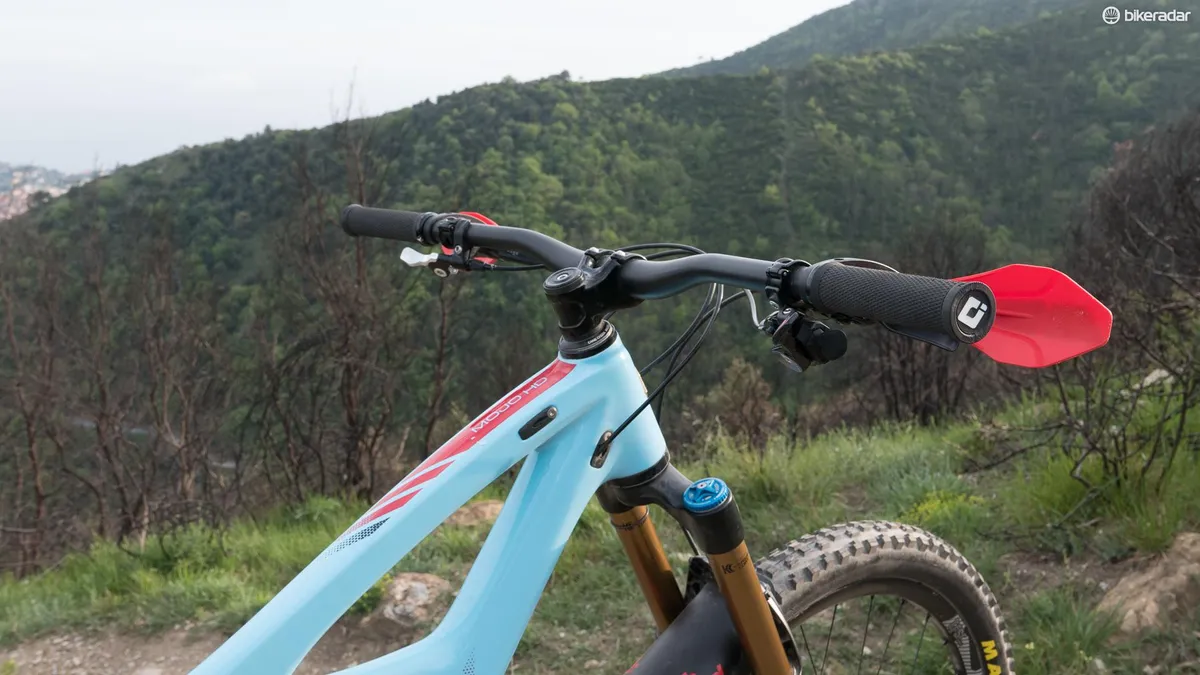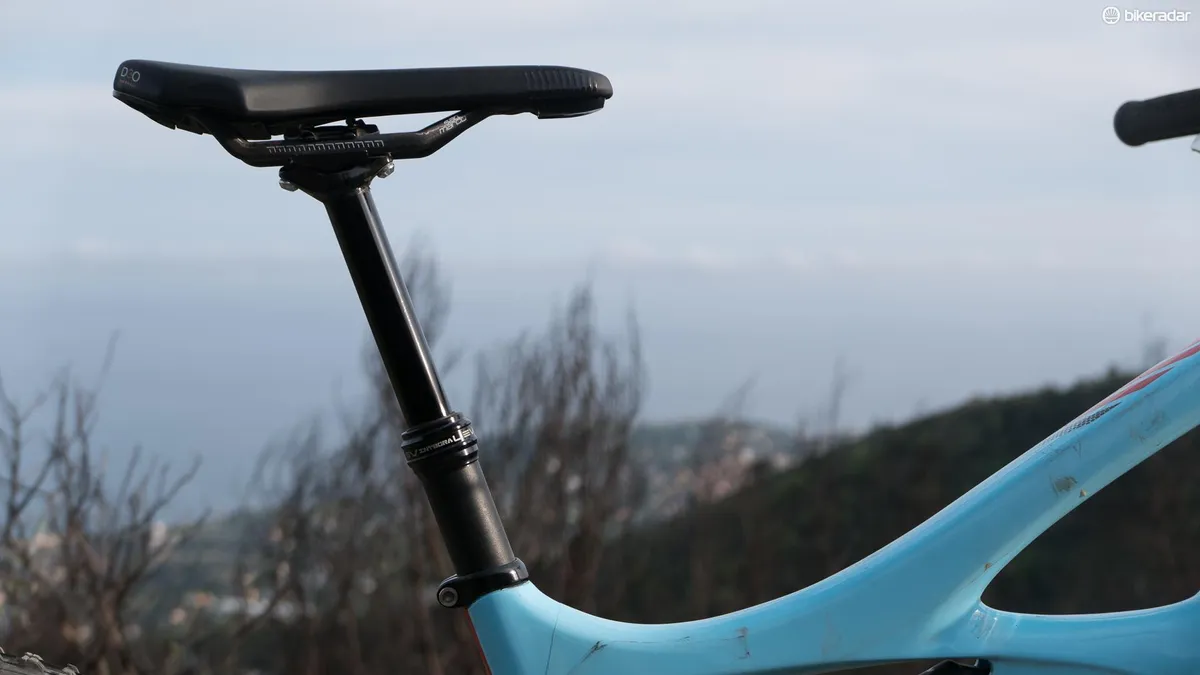Valentina Macheda and Manuel Ducci are riders, racers and trail guides, who make up the Life Cycle enduro team. The husband and wife duo regularly pose a threat to Italian Enduro podiums, thanks in part to an impressive eye for detail when it comes to their bike set up.
We met up on the trails to geek out on the finer points of their highly-fettled Ibis Mojo HD3 Enduro bikes, talk through their choices of sponsors and components, and find out why they have opted not to make any sponsorship deals for certain components. With the same parts to choose from, how would their bikes differ in terms of set up?
Chassis selection
Both riders use Ibis Mojo HD3 frames, offering up 150mm of rear travel. At 170cm tall, Valentina uses a medium frame, while Manuel at 177cm, chooses a large. That puts them both well within Ibis’ sizing recommendations.
Interestingly, both have chosen to fit a 1-degree angleset, slackening the head angle to around 65.6 degrees, which they say makes the bike more stable on loose, rocky terrain.
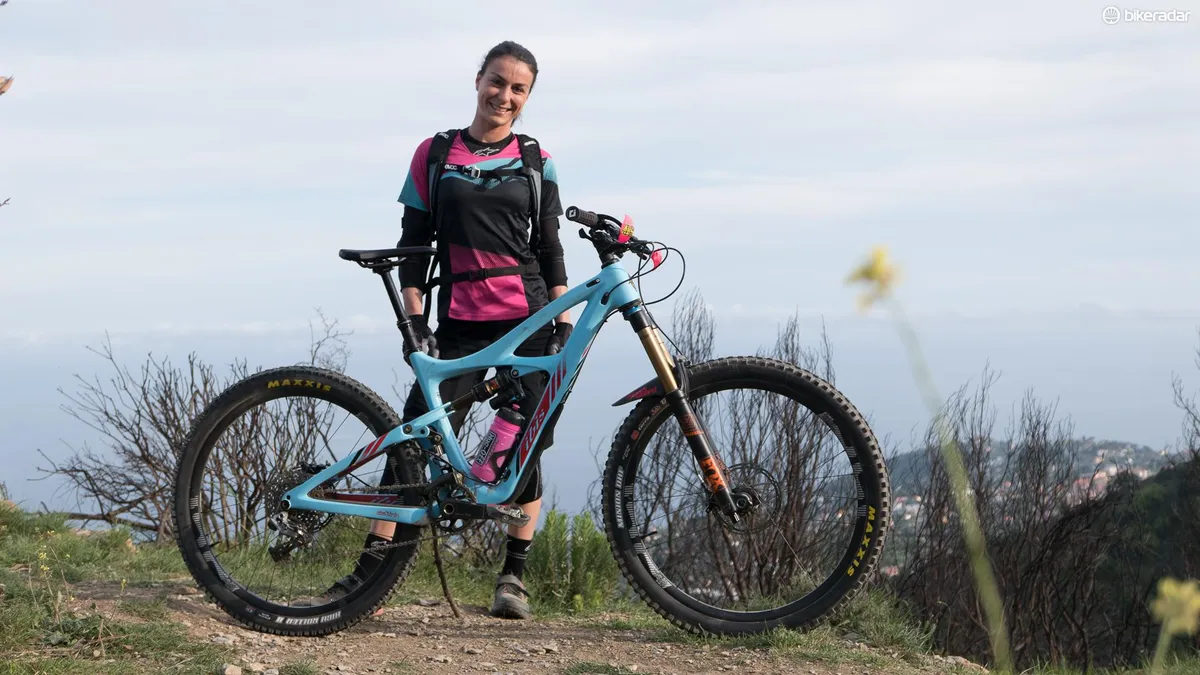
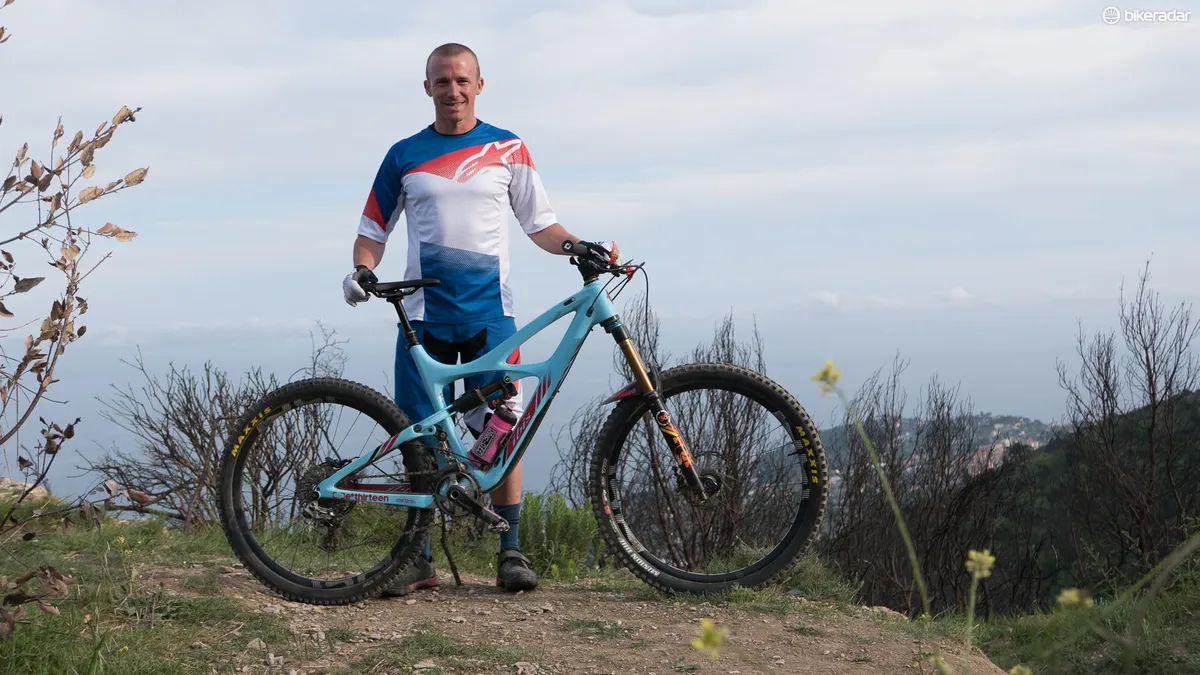
Suspension set up
Manuel and Valentina both use Fox’s 160mm travel Fox 36 RC2 forks. We asked if Valentina (being a very light rider at 56kg) had considered going back to the 34 fork to save some weight from the bike, and the answer from Manuel was pretty categorical: “This fork (the 36) is like a downhill fork. It makes a big difference from a 34, especially when you’re braking in the rough straights... it’s more comfortable and supportive.” We’ll take that as a no, then.
As for shocks, Manuel was using Fox’s Float X2 shock for its superb heat management and damping control, whereas Valentina was using the lighter Float X shock. When asked why this was, they explained that they had recently competed in a race that involved a lot of pedalling. Valentina felt she’d benefit from the Float X’s climb switch to save her legs for sprinting and in order to capitalise on her strengths when it came to the pedally stages.
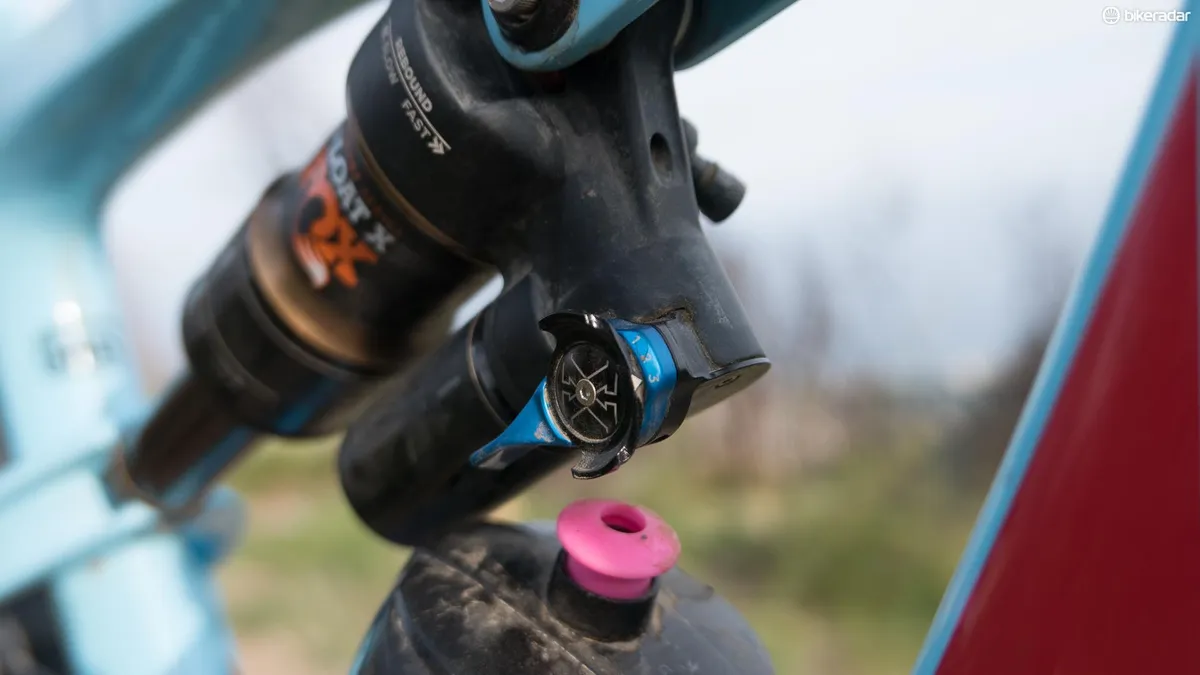
Manuel runs about 25% sag in the fork with 30% in the rear, whereas Valentina runs 30% sag in her fork and 35% out back, as she prefers the extra comfort and traction this offers. To that end, both riders use no volume spacers at all in their forks or shocks. This, they say, is to help generate traction in the loose and rough terrain of their home trails, where grip is at a real premium.
The linear set up relies more on compression damping for support. Manuel is running eight clicks of low speed and five clicks of high speed compression (measured from fully open in this case) in his fork, and says Valentina has similar compression settings.
In the rear, Valentina uses the firmest of her Float X shock’s three open-mode compression settings, and while Manuel didn’t know (or wouldn’t tell us) the exact settings of his Float X2 shock, he said the compression was also quite firm.
Getting to grips
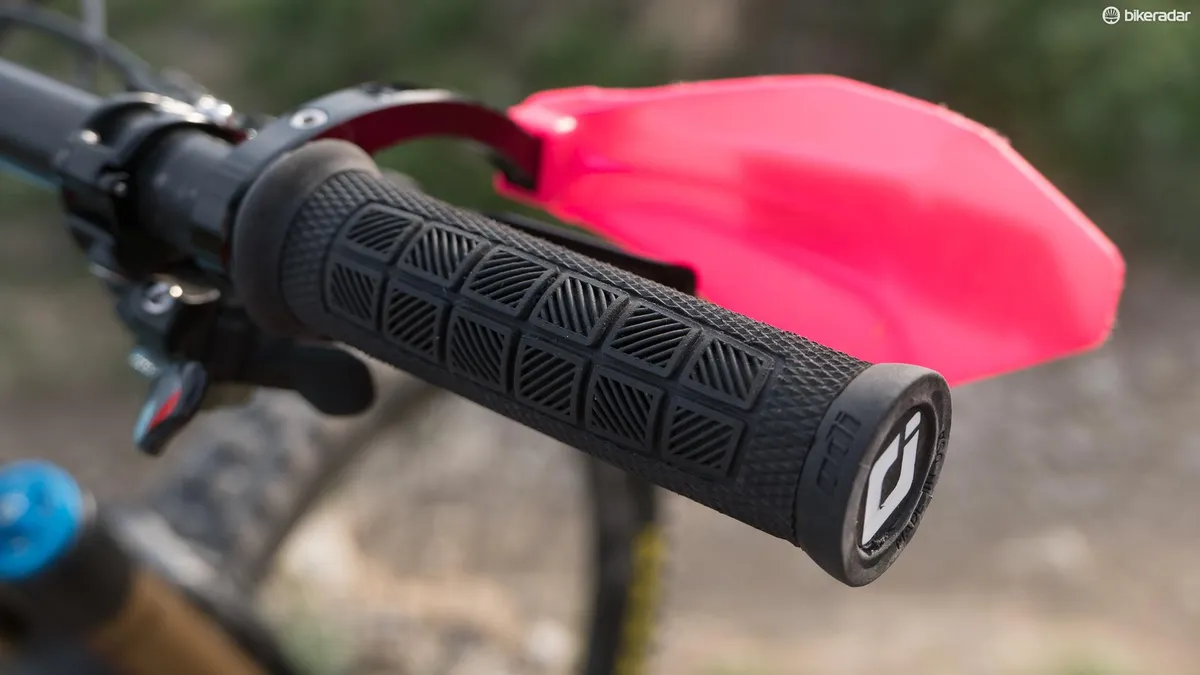
While many female-specific bikes are stocked with narrower grips, Valentina has chosen to go in completely the opposite direction. She uses ODI’s more padded Pro grips as they offer more damping, which she finds more comfortable. Valentina even told us that “those ones are not really big, I prefer even bigger!” That’s a lot to live up to, for a grip. Manuel prefers the feel of ODI’s super slim Motion grip, saying “I have short fingers, and I prefer to feel the bar”.
More stereotypically, Manuel uses a 760mm bar, while Valentina’s is a touch narrower at 750mm.
On guards
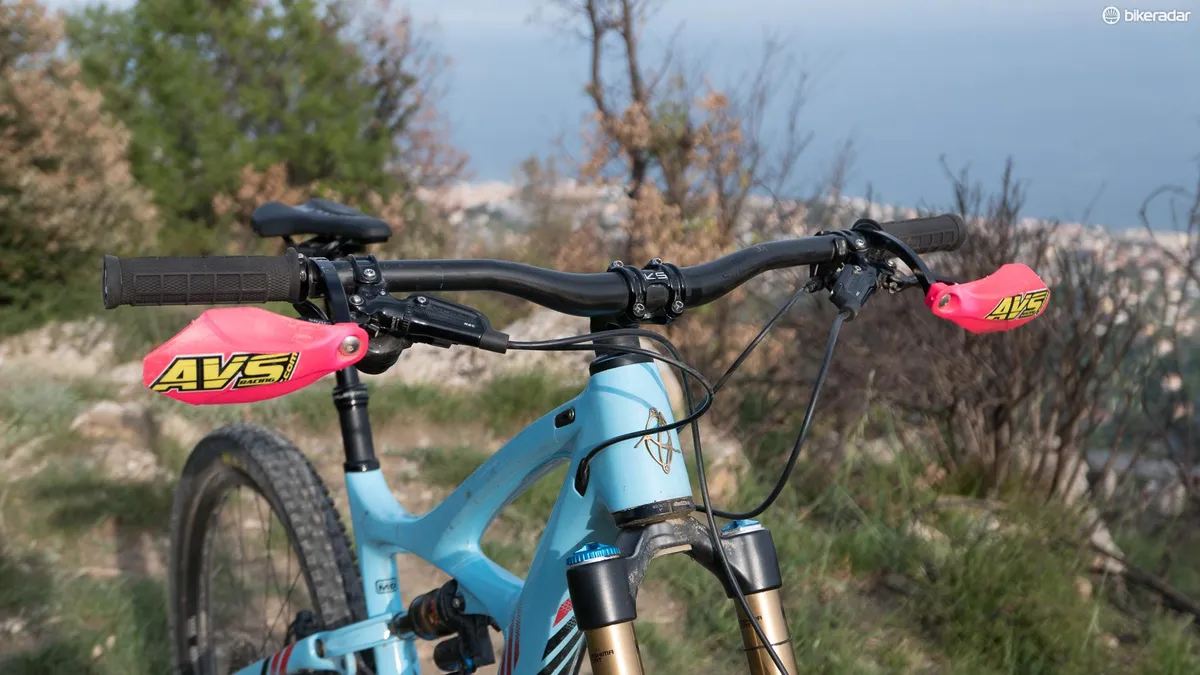
The closest Valentina’s bike gets to ‘women’s-specific’ components are her neon pink AVS hand guards. These are a popular feature in this part of the French-Italian Riviera (as we found when we talked to Nicolas Vouilloz earlier this year).
Manuel explained the reasoning for his (red) guards: “Last year I got two fractures on my hand from hitting trees, which Is why this year I decided to ride these.” He continues, “especially in a blind race, when I used to ride with my finger off the brake leaver, sometimes I hit the brake leaver on the bushes, and I got stopped… With the hand-guard, this doesn’t happen”.
Seatpost selection
Both riders use 125mm travel KS Lev seatposts for training, though Manuel often opts for different travel posts when racing. With a cross-country background, he often uses a 100mm travel dropper for pedally races claiming it takes less energy to drop down and allows him to take a rest in long downhill sections more easily. For really steep and technical courses he uses the 150mm version for extra clearance — it’s horses for courses.
Tyres
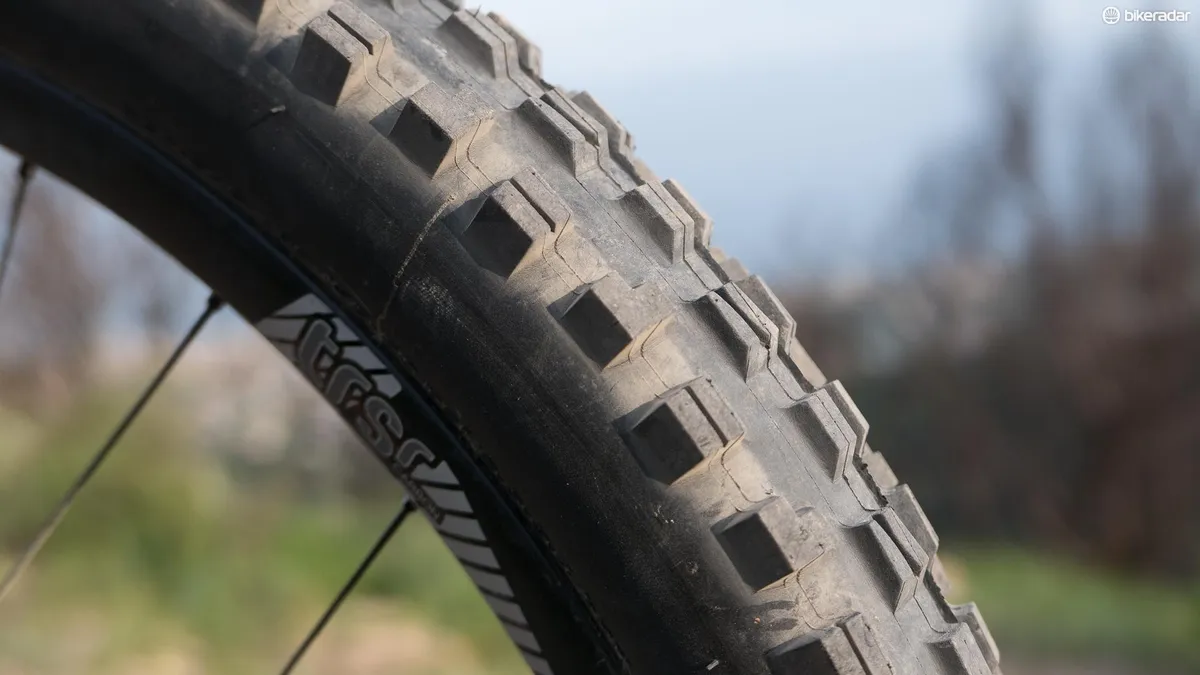
When we chatted to them, Manuel was running Maxxis’ 2.5” Minion DHF tyres front and rear and said that they offer the best grip and damping on the dusty terrain of the region. Valentina was running a 2.4” High Roller 2 out back for the same reason as her Float X shock — it allows her to capitalise on her strengths in the pedally stages of the last race the pair competed in.
Manuel explained that their tyre choice is different for every race, from semi-slicks to DH tyres. “In the last two years we have been with Michelin, and Schwalbe before that. This year we decided not to make an agreement with any one brand because in the last few seasons it was hard to find the right tyres for every race.”
Wheels

This season the team changed from Ibis’ 35mm rims to e*thirteen’s 28m-wide TRS wheelset. Manuel explains some of his reasoning behind this move: “They’re still wide but closer to the ‘standard width’. We found last year that not all tyres are working well with the wide rim. There’s less choice of tyres and the tyres’ shape is pretty bad on a wider rim. They’re really good for training and riding for fun, but not for racing.”
We asked what makes them good for training but not racing? Manuel told us that it's “Because not all the tyres are working well on the rims, so there’s less choices to suit each race. Also, especially the rear wheel, it’s really, really stiff with the wide rim, and maybe too much for racing.” He went on to say that with the slightly narrower rims “the tyres warn you when they’re about to slide, it’s more predictable.”
We’d like to thank Brittany ferries, Sanremo Bike Resort, and Hotel BelSoggiorno for making our trip to Sanremo possible, as well as Manuel and Valentina themselves for their time.
